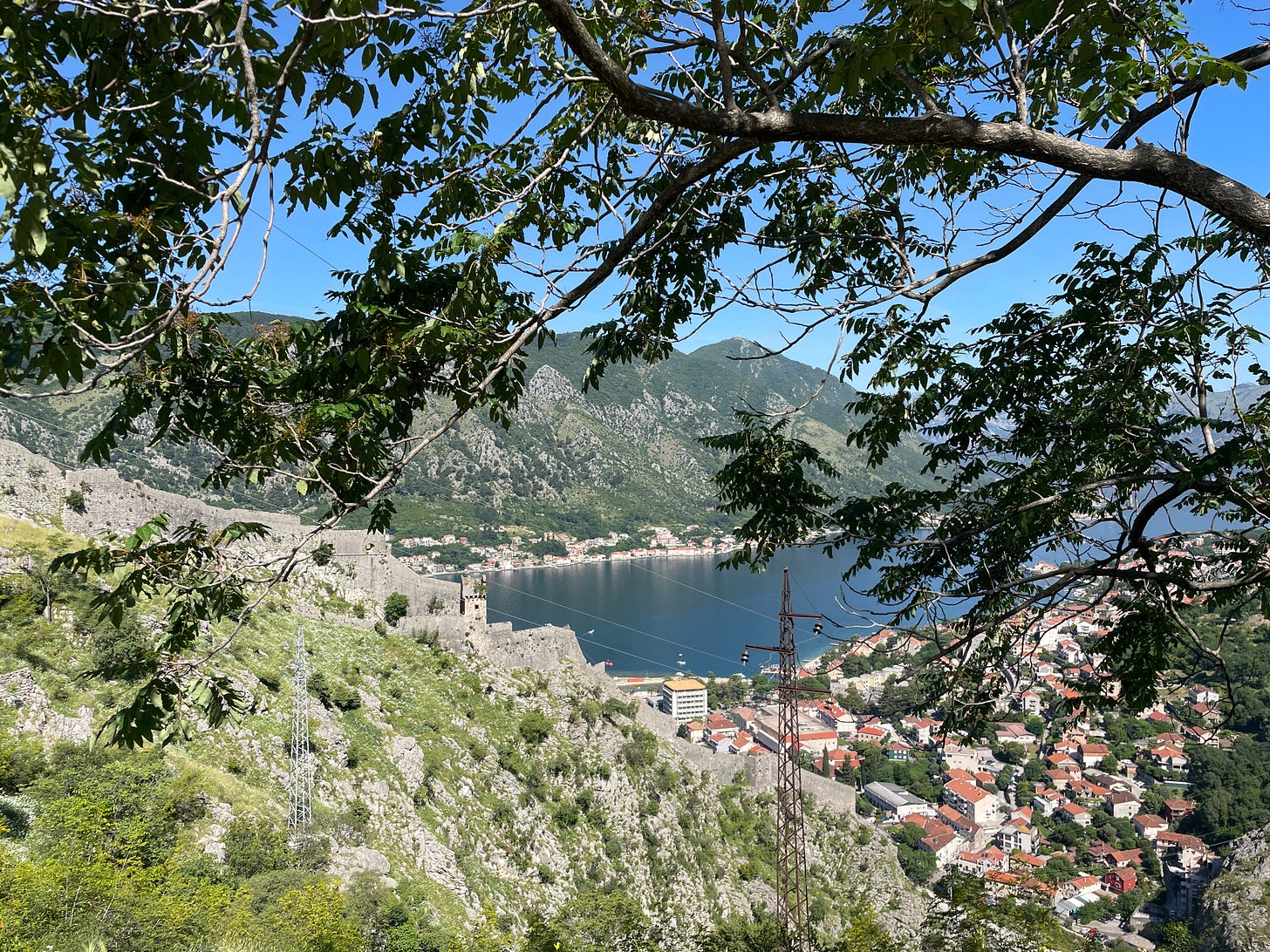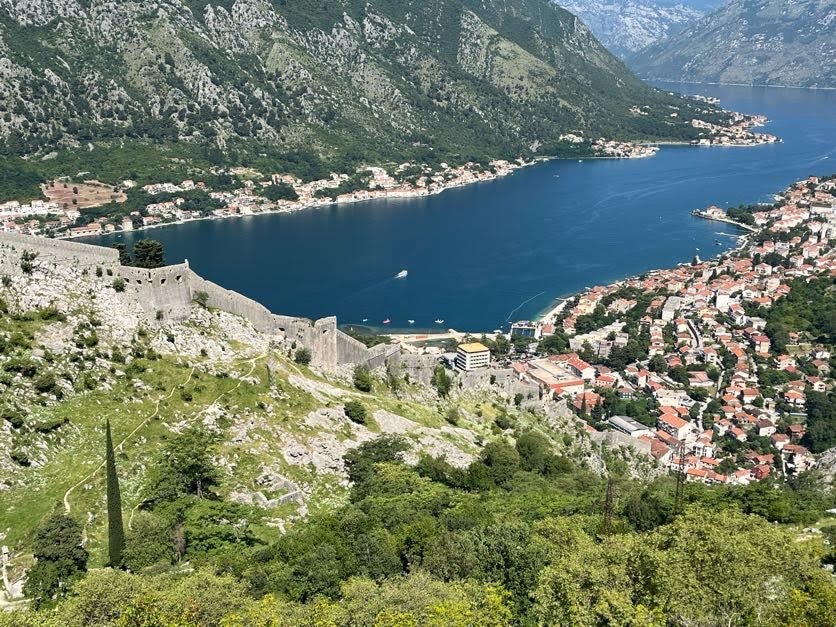Refugia Newsletter #95
Protests, protecting IRA, global energy transition, Sun Day, and yet more beavers
Refugia News
Oh, friends. It’s been a rough week in the USA. I arrived home from my travels in Europe on Monday night, and that familiar anxiety and grief came rushing back. Thanks for worrying on my behalf while I was away. I’m back at it now.
You’ve seen the news. This week we have a lot of reasons to worry. And pray. And act. In the midst of grief and fear, I keep asking myself that question What am I helping to build today? Yes, we are facing reckless destruction and ominous threats. Even amid this, we can take actions to build the future we want. It’s happening. I promise.
One of the things we can build is solidarity as citizens, a sense of community and care. If you are in the US, I hope you are going to a No Kings protest today (if you are able). There’s still time to get to one—with over 2100 protests registered, there’s probably one near you! You can find out at the Indivisible site, where you will also fine advice and instructions. Please be assured that all the sponsors of these protests are emphatic that these are nonviolent events. In fact, the events are meant to be celebrative and family-friendly. Yes, we are protesting against so many things, but we also gathering for democracy, decency, and a more just and sustainable future.
Here’s the crowded map of registered protests, and I’ve clipped out Hawaii, Alaska, and even Mexico in this screenshot. Pretty likely there’s one near you!
If you need a reminder about why protests are important, remember that protests are only one among many tactics, and we need them all. Indivisible suggests that protests change the narrative, bring in new people, foster community, and spread courage. (I had to make a Google doc so you could see the details on those outcomes—they’re good.) If you need some inspiration about American ideals and about how “the starting point and heart of it all is love,” read Rebecca Solnit’s recent essay. Or this essay by Solnit, which offers examples showing that you never know how your small actions will inspire others. If you need some encouragement that we can build the future even now, watch this interview between Heather Cox Richardson and Pete Buttigieg.
I derive so much encouragement from working every day with people of faith who are inspiring their faith communities toward climate justice. This takes courage, patience, solidarity, communication networks, research, relationships, and a combination of prophetic and pastoral approaches. I hope you know from reading this newsletter that even in this dark hour, the seeds of new hope are germinating.
Speaking of seeds, I’ll be in North Carolina next weekend interviewing the folks at the Spring Forest “Farmastery,” a beautiful refugia space. More next time!
The foxglove beardtongue are the most eager early summer bloomers in my native gardens. Thank you, plants, for teaching us about persistence and joy.
This Week in Climate News
I know the focus in US news this week has been on the grotesque, militarized ICE raids on immigrants and the threats to protestors, but we also have to stay attentive to the congressional budget fight, which involves, among other crucial things, the fate of the IRA.
Ironically, the version of the budget bill passed by the House guts the IRA, even though its provisions have most benefitted Republican districts. That’s one reason that monstrosity of a bill only passed by one vote. Now it goes to the Senate.
As Dan McCarthy of Canary Media reported in May, “If the proposed rules become law, it will lead to more greenhouse gas emissions — and threaten hundreds of billions of dollars’ worth of economic development in regions represented in Congress by Republicans.” Also jobs. Remember jobs?
In more recent article in Canary Media, Kathryn Krawczyk explains what is now happening with the bill in the Senate:
Now, it’s the Republican-controlled Senate’s turn to consider the bill. Early signs suggest that at least two GOP senators — John Curtis of Utah and Thom Tillis of North Carolina — are not on board with the aggressive cuts [to the IRA] in the current version of the bill.
Tillis represents a purple state where clean manufacturing and solar project development has boomed in recent years, Canary Media’s Elizabeth Ouzts reported this week. He’s since said that he wants to revise the House’s cut to IRA production and investment tax credits, as well as a provision that bars companies with ties to China from accessing incentives. Tillis and Sen. Lisa Murkowski (R-Alaska) also said that the Senate is unlikely to stand by the House’s provision that would require clean energy projects to start construction within 60 days of bill enactment or miss out on tax credits. [bold text original]
Suffice to say, as the sausage is getting ground, some Republican senators (more than the three mentioned here) are feeling the pressure from their constituents to keep IRA provisions, or at least not destroy them as quickly as the House bill does, with ridiculously quick phaseouts of tax credits for consumers (60 days??!). The phaseouts are longer for commercial and utility-scale projects, but all of it would have the effect of dampening the clean energy transition in the US, not to mention all the lost jobs, lost growth, higher energy costs, and other adverse economic outcomes.
Some dozen House Republicans have even written their counterpart senators to ask for longer phaseout times. An article in ESG dive quotes the letter, which complains that the phaseout schedule passed in the House bill
“would cause significant disruption to projects under development and stop investments needed to win the global energy race,” the letter said. The lawmakers said the overall approach to the tax credit changes “jeopardizes ongoing development, discourages long-term investment, and could significantly delay or cancel energy infrastructure projects across the country.”
So… explain to us why you want to truncate economic development and job-creation, Republicans?
For a case study of what all this could mean, Carrie Klein of Inside Climate News focuses on my home state of Michigan and features Allan O’Shea, a small business owner who runs a residential solar installation business. O’Shea is worried about losing his business:
“You’re just talking about pulling the rug out from the solar residential industry,” [O’Shea] said. That will have a direct impact on how many people he can employ. “These are good jobs created for many people that don’t have a college degree. They’re paying their taxes, they’re hard working Americans all over rural America. It would be really a shame to have that loss.”
A majority of job losses from losing the clean energy tax credit will be in states won by President Trump in 2024, according to an analysis by the Solar Energy Industry Association. SEIA calculates that removing solar tax incentives would result in 330,000 jobs lost across the country, 331 factories closed or cancelled and nearly $300 billion in local investments erased.
Part of the problem here is that people are just not paying attention to the budget fight and what it could mean for their communities. But you are paying attention! Please call your senators (if you are in the US) and let them know you do not want any short-term or long-term rescinding of any of the IRA.
If you need a fiscal reason, here you go: as Inside Climate News report, “clean energy rollbacks will cost the US economy $1.1 trillion by 2035”:
In a week when the Trump administration moved forward on multiple fronts to repeal U.S. climate policies, a new analysis quantified the potential costs for public health, households and the economy—including a stunning $1.1 trillion reduction in U.S. gross domestic product by 2035.
The study by the University of Maryland’s Center for Global Sustainability found that any economic benefits to the policy retreat—which Environmental Protection Agency Lee Zeldin placed at $1.2 billion a year from the power plant regulatory rollback alone—would be overwhelmed by the negative effects of greater air pollution and contraction in new manufacturing and jobs associated with an energy transition.
Moreover, as David Gelles reported in the New York Times in May (free link), the current US federal regime now stands alone in the world in its climate denial:
The American retreat from climate action has made the United States a global outlier. Nearly every other government has recognized that a hotter planet poses a profound threat to humans and ecosystems. Not the Trump administration, which made the United States the only nation to formally withdraw from the 2015 Paris Agreement to limit planetary warming.
This article is a depressing read, surveying all the ways this regime is denying reality and dismantling the US’s capacity to deal with a hotter planet—including our ability even to gather relevant data about what’s happening. I’m sorry to ask you to read this one, but you really should. We need to understand how, taken together, systemic climate denial endangers us all.
Deeper Dive
One more item about clean energy transition, and then on to some cool nature/science business.
While some key players in the US foolishly attempt to dig in with fossil fuels, the overall global trend is definitely toward clean energy. The folks over at Fix the News did a nice job summarizing some recent reports on the global clean energy transition. Bottom line: encouraging progress; still not enough. But let’s celebrate the progress:
“A new Age of Electricity is drawing nearer.” Despite geopolitical uncertainty, the IEA reports energy spending will reach $3.3 trillion this year—$2.2 trillion of which is going into low-carbon solutions, and double what’s being invested in oil, gas and coal. In advanced economies, renewable power to fossil fuel power investment is now almost a rounding error, a 12:1 ratio. In China it is a lower but still very robust 6:1. [bold text original, then added]
Fix the News also “quotes” this image from the IEA report.
You can read the full International Energy Agency report on the IEA website. The Fix the News segment goes on to offer this helpful quote from Kingsmill Bond, Daan Walter, and Sam Butler-Sloss:
To make sense of what’s happening in energy today, we need a new lens. We propose a third way: the electrotech revolution. This sees the transition not as swapping dirty fuels for cleaner ones, but as building a fundamentally better and more efficient energy system organized around electricity. This is being realized through the deployment of electrotech—a new wave of electricity-based technologies including solar, wind, batteries, electric vehicles, heat pumps, smart grids, and digital controls. On the supply side, solar and wind are replacing fossil generation. On the demand side, transport, buildings, and industry are electrifying. And in between, batteries and digital systems tie it all together, enabling real-time coordination, flexibility, and control.
I like the idea of presenting this transition as a fundamental shift to a new and better system overall.
(Note: the linked piece by Bond, Butler-Sloss, and Walter begins with a framework that seems to me to exhibit some straw-man problems, but in the rest of the essay, the historical context and emphasis on the use of digital tech in managing electricity systems is illuminating.)
Enough about energy. On to citizen science!
Kiley Price of Inside Climate News wrote a longer piece on how regular folks using apps like Merlin, iNaturalist, and others are helping professional scientists gather data on animals and plants. For example, in a recent endeavor sponsored by iNaturalist called the “City Nature Challenge,” “participants made more than 3.3 million observations of over 73,000 species, thousands of which are endangered.”
I am a huge fan of the Merlin app. If you haven’t tried it yet, give it a whirl. It’s free! Image credit: merlin.allaboutbirds.org.
When regular folks help in gathering data, it’s called “citizen science.” Nature apps have been especially useful for this, and data from apps has been used already in thousands of professional studies. The data has to be “cleaned”—that is, volunteer researchers check the validity of the data before it gets used in professional studies. But lots of hobbyists are eager to help advance research about animals and plants, and having loads of data-collectors helps immensely. The studies can then help advance both basic research and policy-related studies.
Kiley Price quotes one scientist who remarked that citizen science apps “are helping to legitimize science at a time when science is under attack, and they’re helping to democratize science and bring more people into involvement with it.”
Refugia Sightings
Two things today: Sun Day and beavers. (I know: beavers again!)
I’ve explained before about the day of action and celebration planned for September. “Sun Day” will be a celebration of solar energy, a day of learning, community events, and fun meant to help shift the culture toward excitement about climate solutions. This is a great opportunity for your faith community to lean becoming people of refugia
Third Act, one of the sponsoring organizations, continues to develop more resources to support planning for Sun Day. My friend Rev. Jim Antal has written a great essay on the importance of faith groups’ involvement. I love the way Jim calls us to imagine our way into a better future:
People of faith can and must play a key role, demonstrating to media, to elected leaders, and to the general public that the earth is our common home, that it is up to us to end the desecration of the sacred gift of creation, and that humanity is now called to embrace an urgent transition to clean energy.
Imagine this call coming from thousands of pulpits as part of this Sun Day witness. Imagine thousands of congregations deciding to convene worship outside, alongside countless other Sun Day events, celebrating creation’s provision of endless energy made accessible by the miracle of science and the genius efforts of scientists and engineers. Imagine millions of people proclaiming that transitioning to clean energy is a moral and spiritual imperative.
You can learn more at the Sun Day website. And for ideas specifically for faith communities and individuals, take a look at the Third Act Faith Sun Day link.
OK, beavers. I know it seems like I’m obsessed with beavers. I’m not sure why. Admittedly, they are adorable with those plump, waddly bodies, thick fur, big ol’ teeth, and rubbery tail. But I think I mostly admire their engineering genius and can-do attitudes. Also, they create refugia. They just can’t help it; it’s what they do. Maybe that’s why beavers are getting to be the mascot for this newsletter. Or maybe just my own personal spirit animal.
At any rate, I have a legitimate reason to bring them up again: a beautiful article by Ben Goldfarb in this month’s National Geographic. I would share a link with you, but of course it’s behind a paywall. If you don’t subscribe yourself, maybe browse an issue sometime from the magazine racks at the grocery store?
Anyway, the article describes what you all know from reading this newsletter: that beavers are ecosystem engineers whose damming habits create habitat for loads of plants, mammals, birds, amphibians, fish, and insects. And their engineering skills adjust water flow in a way that makes landscapes resilient amid drought, flooding, and fire—their structures even detoxify water by slowing it down and letting pollutants sink.
OK, sure, sometimes they get busy building in places where we wish they wouldn’t, but as the article notes, more and more communities are realizing that we can gain a lot of benefits from partnering with beavers and learning from their wisdom: “First, they were pelts, then pests, but now they are emerging as climate heroes.”
In fact, did you know that people are now creating “beaver dam analogues” or “BDAs” to help improve habitat? Or that there are “conflict management” groups that help mediate between people and beavers, maybe fencing off a culvert, for example, where beaver activity has plugged things up.
One of the things I like best about National Geographic is their fantastically educational graphics. I took a photo of one spread from this article to give you a sense:
I see this and think: what fourth-grade teacher could resist using this graphic in a unit for science class? The kids would love it!
I read about beavers a lot, but I still learned things from this article. Beaver teeth contain iron to make them stronger! Beaver tails store fat! Beavers have a transparent eyelid to protect their eyes underwater!
OK, I promise I will focus on other species for at least the next three issues of this newsletter. After that: no promises.
More Gratuitous Photos
Next time, I’ve got some cool climate art stuff to share with you. For now, I’ll add a few additional photos from my journeys in Italy and Greece—ones that I can justify sharing as vaguely relevant to climate concerns. Vaguely.
A fountain in Rome. Neptune and nymphs or something? The point is, notice the ad for a BYD electric car in the background. Yes, you can buy Chinese-made EVs in Italy.
One of my favorite activities was hiking the Ladder of Kotor in Kotor, Montenegro. This “strenuous” hike (it really was) involved 71 switchbacks and an elevation gain of over 3000 feet. We climbed higher…
…and higher. This isn’t even the top! Happily, we lived to tell the tale. (Image credit: Ron Rienstra)
The Mediterranean really is gorgeous. Even as a freshwater lake lover, I have to admit that those colors are breathtaking. Photo taken on Crete by Ron Rienstra.
Thanks for reading. Take courage, find joy, be well. See you in two weeks.
(Bold text is added unless otherwise indicated.)














I love Merlin!